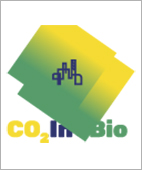
LIFE Project: Reducing CO2 emissions through industrial integration and the creation of value chains
- Type Project
- Status Filled
- Execution 2019 -2023
- Assigned Budget 8.945.200,00 €
- Scope Europeo
- Autonomous community Castilla y León
- Main source of financing LIFE
- Project website Web del proyecto
LIFE-CO2-INT-BIO aims to contribute to mitigating CO2 emissions in three energy-intensive industrial sectors—namely, biomass power plants, commercial CO2 gas production, and intensive agricultural greenhouses—by applying new techniques and methods to these sectors through industrial integration and the creation of new value chains for CO2 as a feedstock.
Three industrial sectors (commercial CO2 gas production, biomass power plants, and greenhouse vegetable production) are not expected to achieve the designated carbon dioxide (CO2) emission reduction levels, even with their best efforts and technology. These three industrial sectors would benefit from being integrated under a joint approach with common goals to reduce their CO2 emissions while increasing their respective competitiveness.
- To demonstrate and certify the benefits, effectiveness, and CO2 reduction potential of an integrated and innovative business approach to reducing emissions from three different industrial sectors (biomass power plants, commercial CO2 gas production, and greenhouse vegetable production) as a means of achieving EU climate change mitigation objectives.
- Create a new value chain and a new product in the commercial CO2 industry (by creating a green and sustainable source for commercial CO2 gas under a new commercial approach) | Increase energy efficiency in industrial processes, increase the use of renewable energy in the EU, and meet the objectives of the sustainable development agenda, in accordance with EU policies and action plans.
- To demonstrate the technical and economic feasibility of a continuous and sustainable CO2 capture and cleaning system from biomass flue gases (very limited experience to date) in order to define an optimal size and promote replicability.
- Improving the circular economy by converting two waste streams into new materials for other processes: flue gases from biomass combustion and plant waste currently landfilled, generating methane (CH4) emissions.
- Disseminate the project results to replicate or transfer the technology to other locations or industrial sectors.
- Construction of a CO2 plant to first capture emissions from the biomass power plant using an amine-based chemical absorption process and then purify the gases to remove pollutants and impurities. Adaptation of the forest biomass energy production plant to capture flue gases for CO2 recovery. Creation of value chains from CO2 derived from biomass combustion, transforming it into a commercial product for the food and beverage industry: carbonation, refrigeration, or packaging. Development of a new product: green CO2 derived from the combustion of 100% renewable biomass.
- Development of an Ecolabel for CO2 carbon neutrality: Environmental Product Declaration (EPD).
- 33,000 tCO2/year captured at the biomass power plant and recovered at the CO2 purification plant.
- Avoided carbon footprint of 295 tCO2/year derived from the transport of liquefied CO2 to local customers.
- 25,469 t/year of biomass managed at the Power Plant to supply heat and electricity to the CO2 Plant.
- Coordinator/entity name: Jesús Ángel Díez Vázquez
- Postal address: Rigoberto Cortejoso 14, 47014, VALLADOLID,
- FUNDACION PATRIMONIO NATURAL DE CASTILLA Y LEON
- CARBUROS(Sociedad Española de Carburos Metálicos S.A.)
- GBO&M(GESTAMP BIOMASS O&M S.L.)
- BdG(BIOELECTRICA DE GARRAY, S.L.U.)







